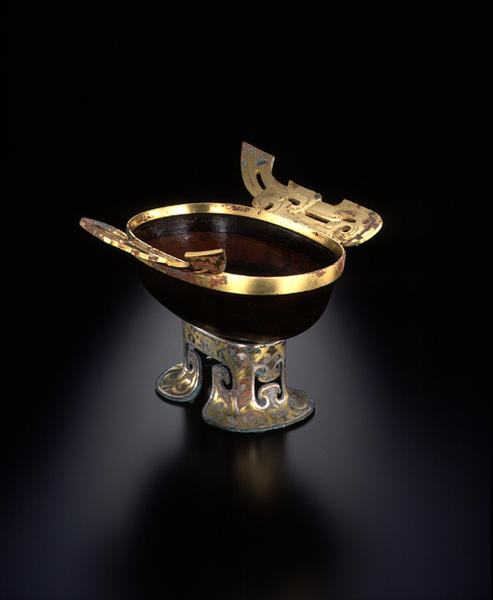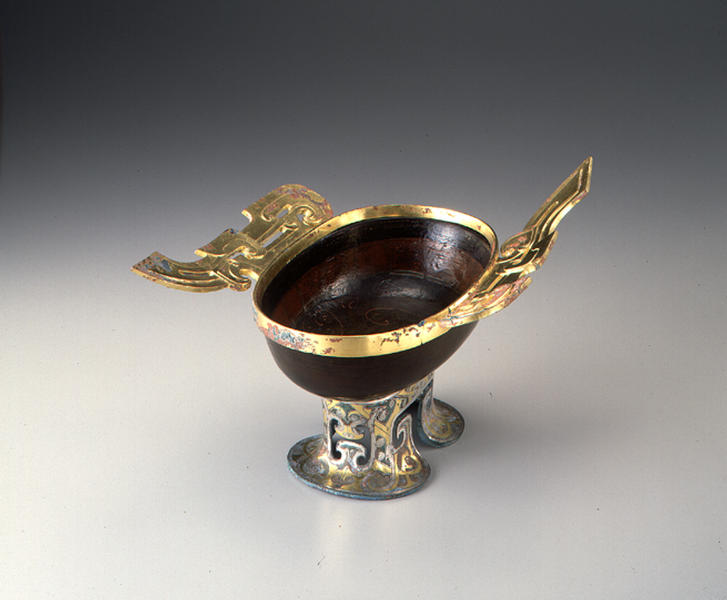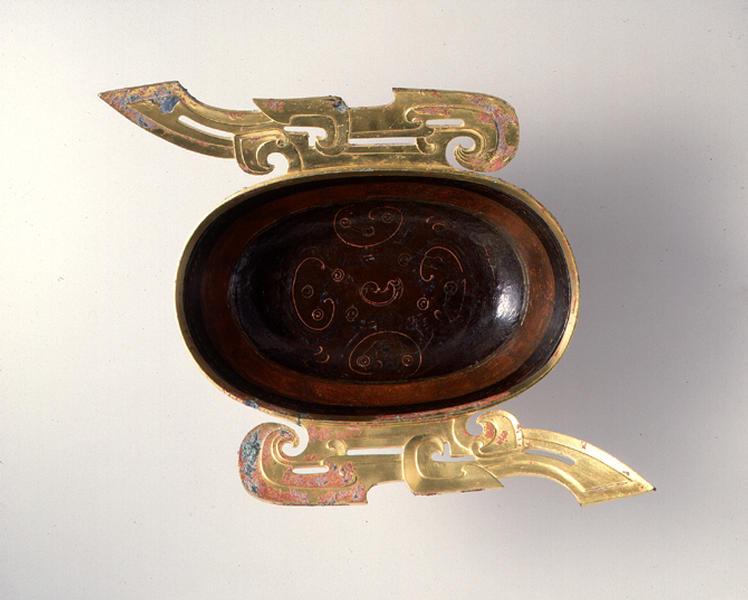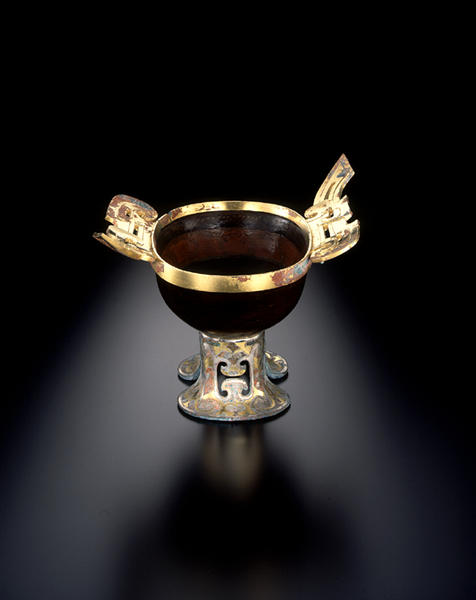Ear Cup on Foot
- China
- China, Western Han period
- 3-1cB.C.
- gilded bronze, bronze with gold and silver inlays
- H-19.8 D-24 W-15.3
Catalogue Entry
Drinking cups provided with wing-shaped ears at the longer sides of the elliptical mouths first appeared in the Eastern Zhou period (771-256 B.C.) and gained wide acceptance. This type of cup was later called erbei (ear cup) or yushang (sparrow cup) and was produced until the Tang period. During the Warring States period (481-221 B.C.), there was a single-legged lacquer vessel, comparable in height to single-legged wooden dishes called dou, used for a similar purpose.*1 Toward the Han period, this type of cup was used as tableware. If the cup was made of metal, it was placed on a brazier, sometimes topped with a lid, to heat the contents. Alternatively, it was used as a dish to serve wine or soup.
The bronze foot supporting the elliptical cup has a rectangular cross-section with rounded corners. It is flared at the bottom, as often seen in dou, and is attached to the cup with four tenons. The foot has T-shaped openwork on the longer side and H-shaped openwork on the shorter side. The foot's surface is finished in gold and silver inlay in a design of crossed whirling cloud. The rim of the vessel is inset with an oval ring of gilded bronze, to which pointed ears are attached on the longer sides. The layers of lacquer covering the inside of the cup were applied on a wooden cup later reconstructed. The C-shaped design seen here on the lacquer was newly adapted in the Han period, the origin of which can be traced to the cloud and bird pattern on lacquer ware of the Qin period (221-206 B.C.).*2 Also particular to Han is the motif of thin unbroken and dotted lines right below the rim.
The two wings of the cup are very daring and are rarely found in other ear cups, though the excavation of an unmarked tomb in Xiaxi Province provided several examples of large ear cups which combined a metallic lip, ears, and a base.*3 Compared to the ears usually placed to the right and left of a line symmetrically, the ears of the present cup maintain symmetry in relation to a point of rotation. The whirling cloud pattern dominating the design of the ear at one end changes as if to fly out outward on the other end. The cloud pattern with angular corners as seen in the present work can be traced to the lacquer ware of the Eastern Zhou period, and this characteristic manifests itself more clearly in the Han period.*4
The dynamic combination of various elements in this work are perhaps intended to mimic rapid movements of whirling clouds, similar to rapidly executed design patterns often found in lacquer ware of the Qin and Han periods. Usually, these decorative elements remain within the confines of the overall shape of the vessel. This superb cup is an exception the various elements that constitute this piece, including the openwork along the cloud design on its foot, represent an attempt to express rapid cloud movements. The design of breaking down line symmetry and expressing the rapid flux of spirit 'qi' can already be seen in the ornaments in jade from the Warring States Period, and become popular in works in jade of the Western Han period, as seen in the jade ornament from the Western Han tomb in Xianggang Guangzhoushi, Guangdong province. Moreover, from the same tomb, a cylindrical chariot ornament in bronze with an inlaid similar pattern to that of the foot of present cup, was excavated.*5
Judging from the size of the present work and from the fact that it is fitted with a foot, this piece is considered to have been used for ceremony.



